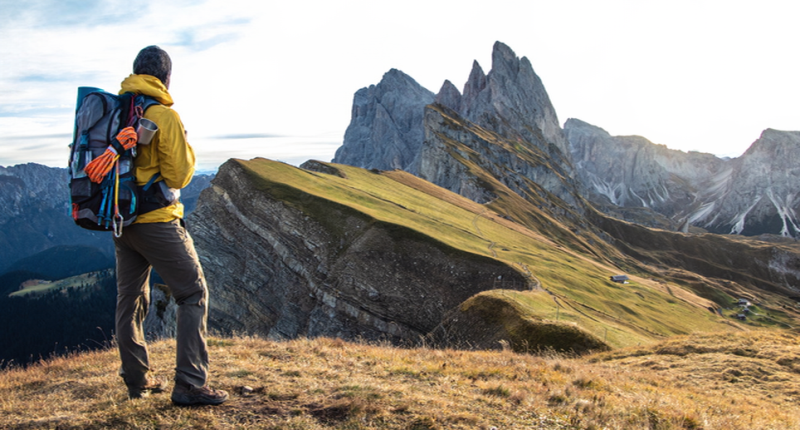Pocket design
Outdoor clothing and workwear usually require a large number of pockets for storing tools or equipment. For example, rescuers and climbers have specially designed safety belts or tool hooks.

Outdoor clothing and workwear are designed to be functional first. For example, construction workers need wear-resistant, waterproof, and windproof workwear, medical industry workwear needs antibacterial and antifouling features, and outdoor clothing usually focuses on windproof, rainproof, breathable, and warm functions.

Outdoor clothing and workwear usually require a large number of pockets for storing tools or equipment. For example, rescuers and climbers have specially designed safety belts or tool hooks.

In order to ensure the safety of workers in dangerous environments, workwear often incorporates reflective strips, fire-resistant coatings, and knee or shoulder reinforcements. For example, welder clothing will consider fire resistance and high temperature resistance.

Especially in outdoor clothing, layered design is used to cope with changing weather conditions. For example, ski suits, mountaineering suits, etc. often have waterproof windbreakers on the outside and warm materials on the inside.

Many outdoor clothing will be designed with a removable hat, connected by zippers or snaps, which is convenient for quick adjustment according to weather needs. Some hats also have an adjustable drawstring design to cope with wind or rain and snow.
Outdoor clothing and workwear need to consider the comfort of long-term wear. Cutting will reduce tightness according to ergonomics and ensure that the wearer will not be restricted by clothing when bending, raising hands or kneeling.

GPS positioning modules are sometimes added to outdoor adventure clothing to facilitate rescue and positioning in emergency situations.

Although functionality is the focus, appearance design cannot be ignored. Especially in outdoor clothing, brands often also pursue a certain sense of fashion, such as color matching, simple and atmospheric shapes, etc., to increase consumers' desire to buy.


Outdoor clothing and workwear are often exposed to harsh environments, so the sewing process must be very strong. Common stitching methods include double needle, lock stitching, and even heat sealing technology (seam sealing) to ensure that the clothing will not crack under high-intensity use. In addition, the seams of waterproof clothing are treated with special adhesive strips to prevent water from seeping through the gaps.

Hot pressing technology is widely used in seamless clothing and waterproof and windproof clothing. By heating the edges of the material and pressing them together, the gap problem caused by stitching is reduced, and the protection ability is further improved.

In the process, it is necessary to balance waterproof and breathable performance, especially for outdoor clothing. Advanced breathable technology can ensure that sweat is discharged from the inner layer, while external rain or cold wind cannot enter, ensuring that the wearer is dry and comfortable.

For special working environments, the process also needs to achieve protection against wear, cutting, fire, etc. For example, in a metal welding environment, work clothes need to be resistant to high temperatures and fire, while outdoor mountaineering clothes need to be tear-resistant.

Fabrics such as Gore-Tex and eVent are often used in outdoor clothing. They achieve the dual functions of waterproof and breathable through microporous structures, ensuring that the clothing can stay dry even in harsh climates.

Such as Cordura nylon, this fabric is very durable and suitable for use in harsh environments. This material is often seen on construction sites and in expeditions, ensuring that clothing can be used for a long time under high friction conditions.

In work environments that require fire protection, materials such as Nomex and Kevlar are often used. These fabrics are not only resistant to high temperatures, but also have good cut and tear resistance.

Antibacterial fabrics are often used in work clothes in the medical and food industries to ensure that the clothing does not breed bacteria and remains clean and hygienic.

In cold environments, clothing needs to have good thermal insulation properties. Down is a commonly used thermal insulation material that is light and has excellent thermal insulation properties. Synthetic fibers such as 3M Thinsulate are also common, which can maintain warmth in humid environments.

Lightweight design is an important trend in outdoor apparel. Common lightweight fabrics include polyester and nylon, which are designed to reduce the weight of the clothing without compromising strength and functionality, making them ideal for long periods of wear

In order to increase wearing comfort and flexibility, work clothes and outdoor clothing are often added with certain elastic fibers (such as spandex), especially at joints, which can increase the range of motion of the clothing.
UniOuter focuses on outdoor uniform fabrics. We have a professional design team. Contact us to customize high-quality outdoor uniforms for you and grow with your brand.